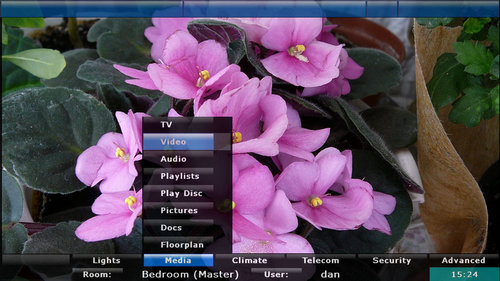Archive:10-foot user interface: Difference between revisions
Jump to navigation
Jump to search
No edit summary |
No edit summary |
||
| Line 6: | Line 6: | ||
"10 foot" refers to the fact that the interface's elements—i.e. menus, buttons and so on—are theoretically large enough to read at a distance of 10 [[Foot (length)|feet]] (approximately 3 [[metre]]s) from the screen. To avoid distractions and to be clearer, 10 foot UIs also tend to be very simple and usually only have the core buttons you require. | "10 foot" refers to the fact that the interface's elements—i.e. menus, buttons and so on—are theoretically large enough to read at a distance of 10 [[Foot (length)|feet]] (approximately 3 [[metre]]s) from the screen. To avoid distractions and to be clearer, 10 foot UIs also tend to be very simple and usually only have the core buttons you require. | ||
Typical examples of 10-foot user interfaces are [[media center]] software applications such as [[Front Row]], [[LinuxMCE]], | Typical examples of 10-foot user interfaces are [[media center]] software applications such as [[Front Row]], [[LinuxMCE]], [[Windows Media Center]] and [[XBMC Media Center]] interfaces. | ||
Revision as of 10:38, 23 October 2008
A 10-foot user interface is a software user interface, designed for display on a television set (or similar large screen), with interaction using a regular television-style remote control.
"10 foot" refers to the fact that the interface's elements—i.e. menus, buttons and so on—are theoretically large enough to read at a distance of 10 feet (approximately 3 metres) from the screen. To avoid distractions and to be clearer, 10 foot UIs also tend to be very simple and usually only have the core buttons you require.
Typical examples of 10-foot user interfaces are media center software applications such as Front Row, LinuxMCE, Windows Media Center and XBMC Media Center interfaces.
